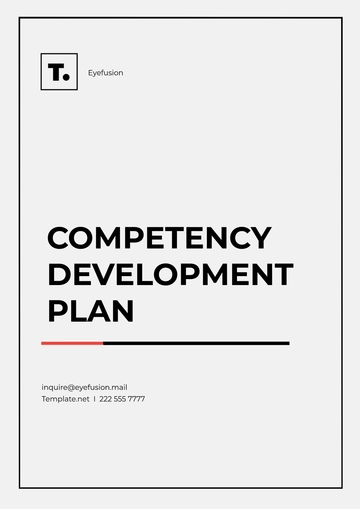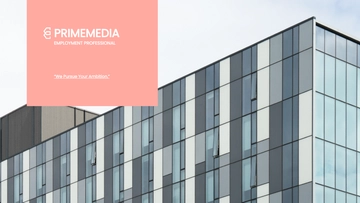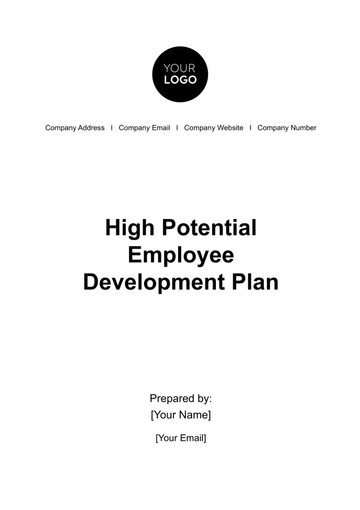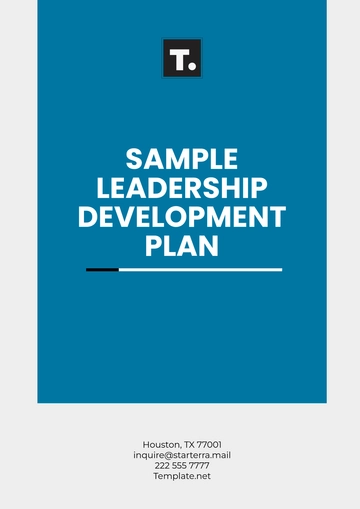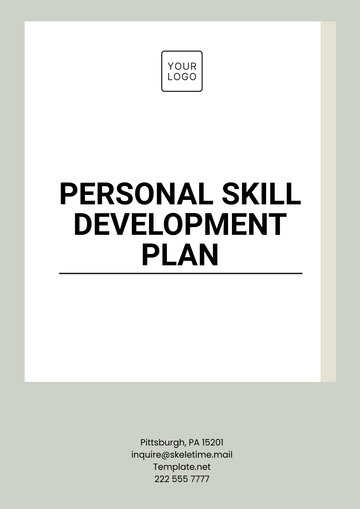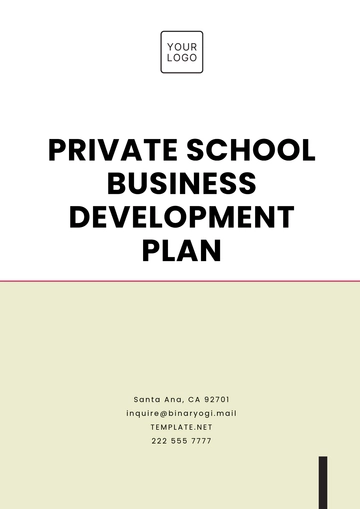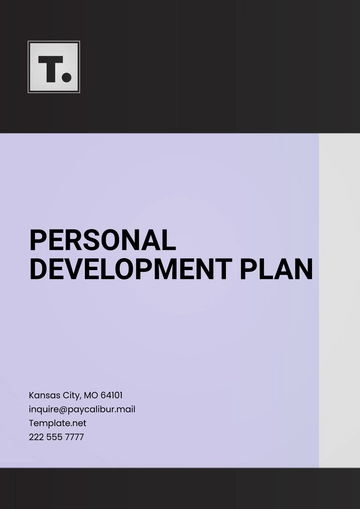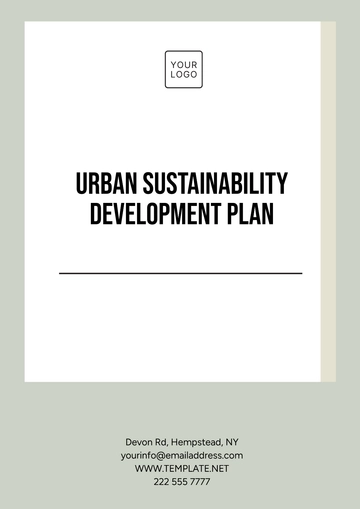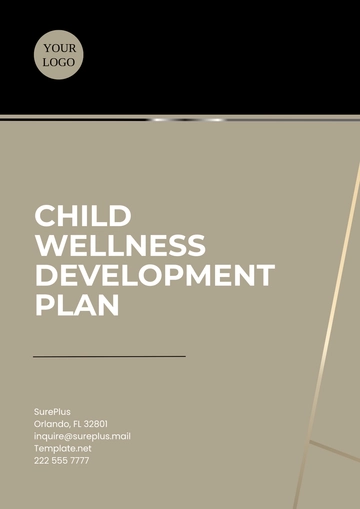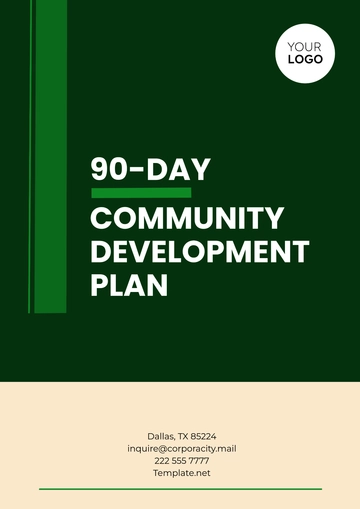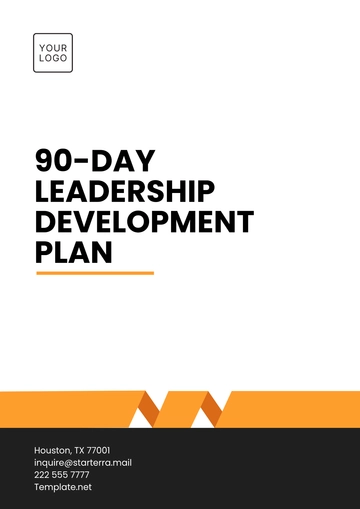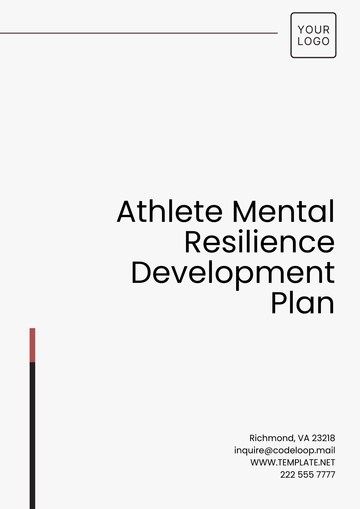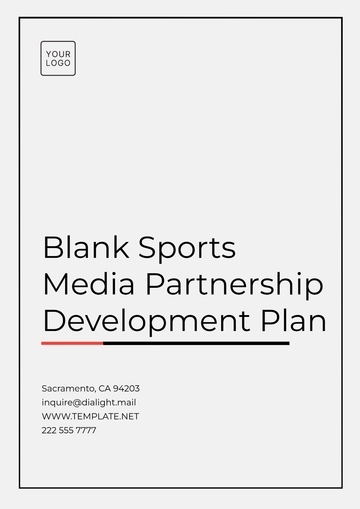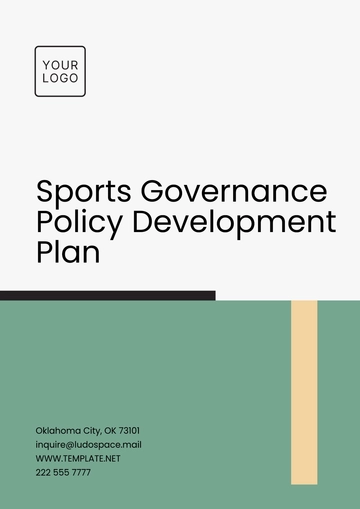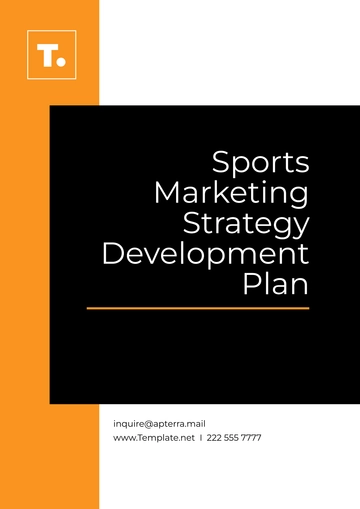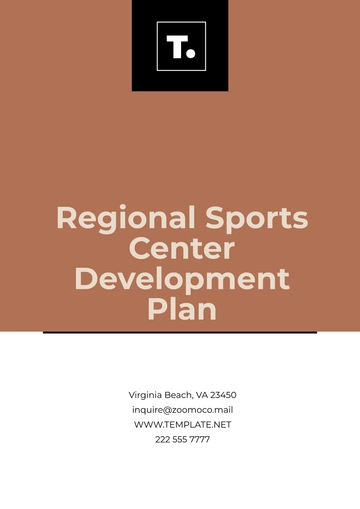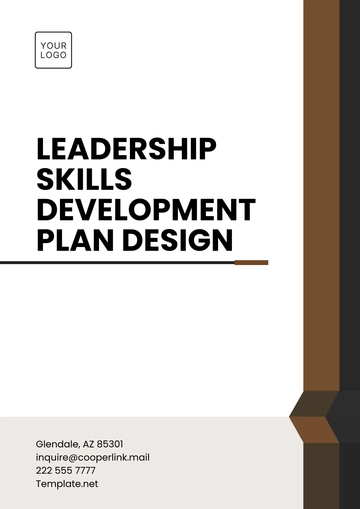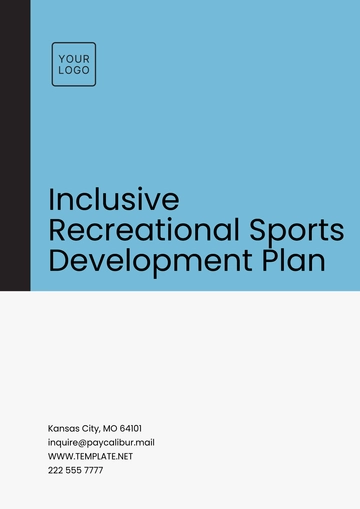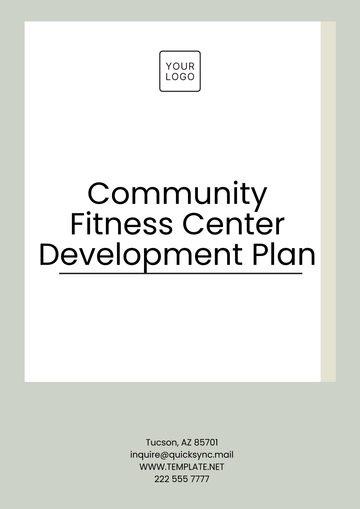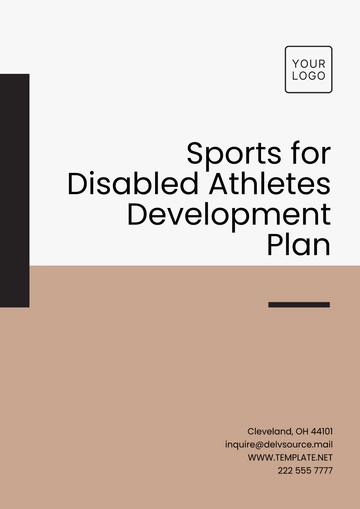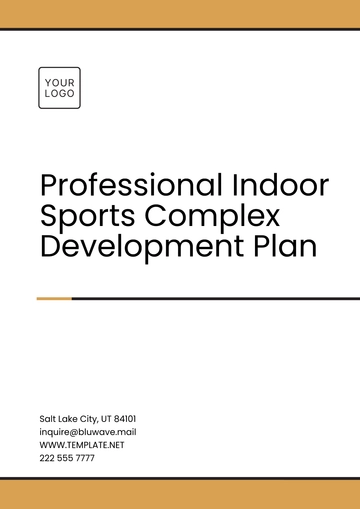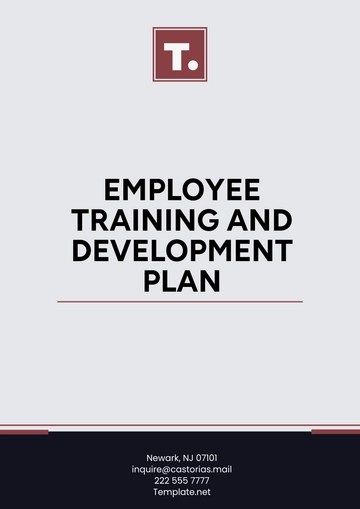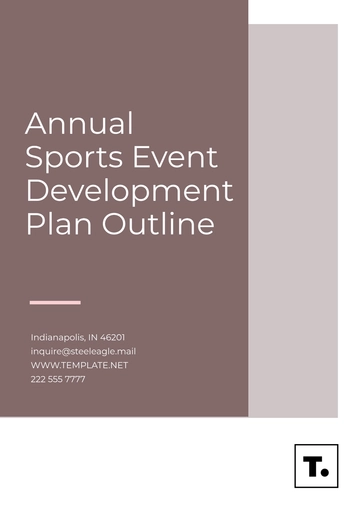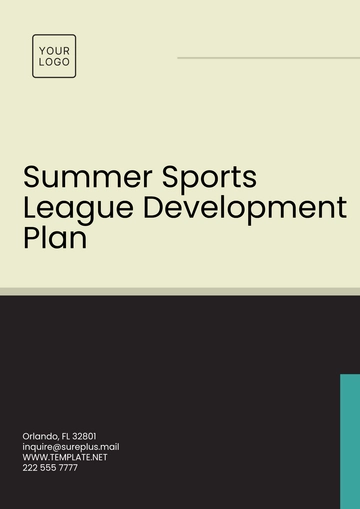Free Community Fitness Center Development Plan
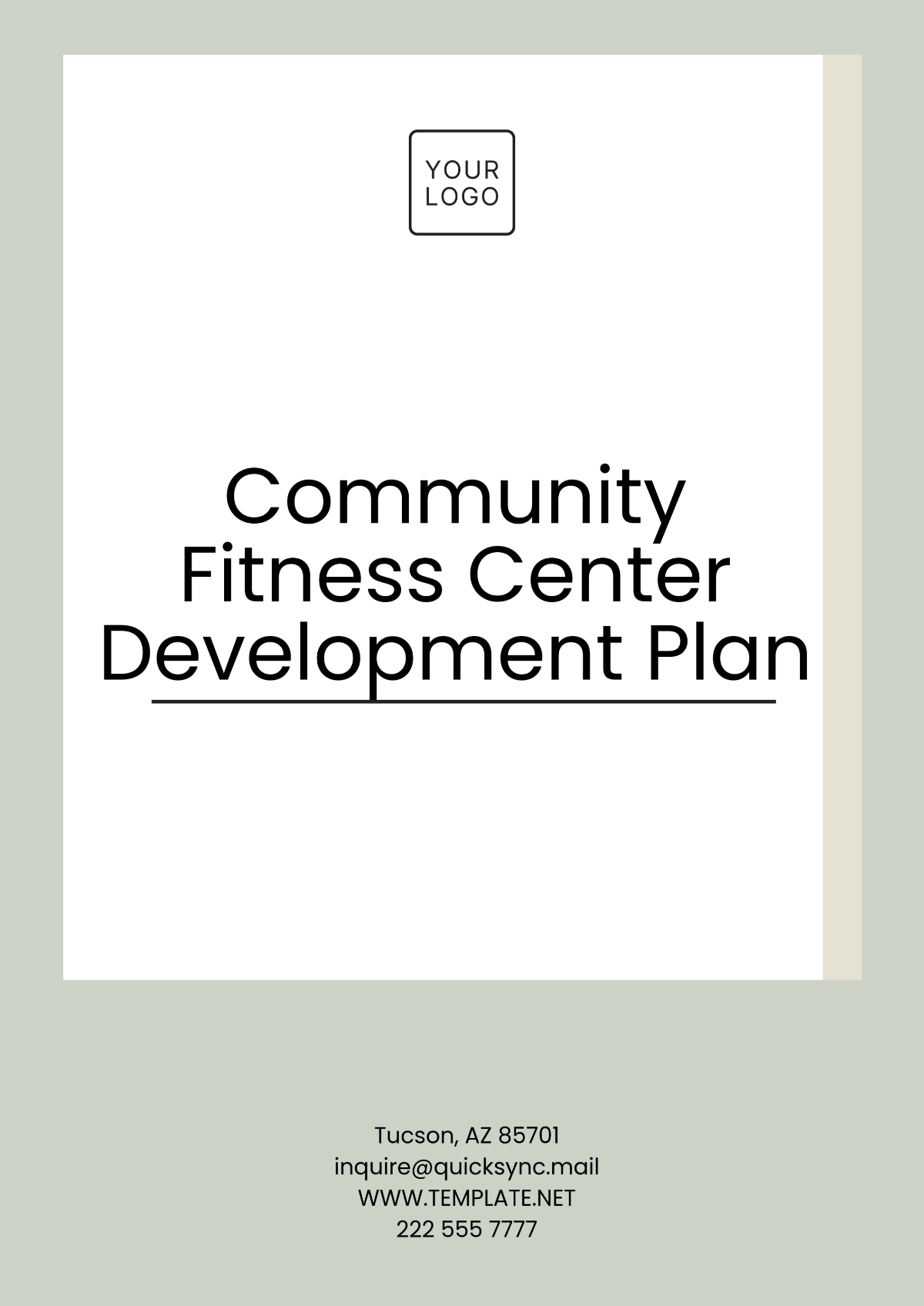
Prepared by: [Your Name]
Date: May 14, 2051
The Community Fitness Center Development Plan outlines a comprehensive strategy for establishing a state-of-the-art fitness center designed to improve the health and wellness of residents. By focusing on community engagement and sustainable practices, the development plan seeks to create a facility that not only meets current demands but is adaptable for future growth.
1. Introduction
1.1 Objectives
Promote Health and Wellness: Provide access to a wide range of fitness activities that cater to diverse needs.
Foster Inclusivity: Create an environment welcoming to all ages, abilities, and backgrounds.
Ensure Financial Sustainability: Employ strategic planning and partnerships to maintain long-term operations.
Enhance Community Integration: Position the center as a hub for social interaction and collaboration.
1.2 Goals
Increase Community Engagement: Achieve high participation rates across demographic segments.
Improve Local Health Outcomes: Support active lifestyles to reduce health disparities.
Establish Cultural Inclusivity: Reflect the community’s diversity in programs, staff, and outreach.
2. Market Analysis
2.1 Community Demographics
Demographic Segment | Percentage of Population | Targeted Services |
|---|---|---|
Children and Teens (0-17) | 30% | After-school programs, youth leagues |
Adults (18-64) | 50% | Group fitness, personal training |
Seniors (65+) | 20% | Aquatic therapy, low-impact exercises |
2.2 Competitor Analysis
Strengths and Weaknesses: Highlight gaps in local fitness offerings, such as accessibility, family-oriented services, or eco-conscious facilities.
Unique Value Proposition: Emphasize differentiation, such as community-centric programs, superior amenities, or innovative partnerships.
3. Facility Design and Features
3.1 Site Selection
Sites will be evaluated based on:
Accessibility: Close proximity to residential areas and public transportation.
Cost-effectiveness: Preference for locations with existing infrastructure.
Demographic Suitability: Within reach of high-demand population segments.
3.2 Architectural Design
Incorporate flexible spaces for multifunctional use.
Ensure ADA compliance and universal design principles.
Utilize eco-friendly materials for sustainable development.
3.3 Features and Amenities
Multi-purpose rooms for fitness classes and events.
Dedicated areas for cardio, weightlifting, and functional training.
Swimming pool with lanes for both competitive and leisure use.
Wellness Zone offers yoga, meditation, and therapy sessions.
Locker rooms with modern amenities, including family-friendly options.
Community café with healthy food options.
4. Financial Planning
4.1 Budget Overview
Expense Category | Estimated Cost |
|---|---|
Construction and Renovation | $2,000,000 |
Equipment | $500,000 |
Staff Salaries | $400,000 |
Marketing and Promotion | $100,000 |
4.2 Revenue Streams
Primary: Membership fees, personal training sessions, space rentals.
Secondary: Partnerships with healthcare providers, sponsorships, and retail sales.
Tertiary: Grant funding and government support for public health initiatives.
5. Community Engagement Strategy
5.1 Outreach Initiatives
Community Events: Free trial days, wellness fairs, and seasonal promotions.
Digital Presence: Active use of social media, blogs, and targeted email campaigns.
Feedback Loops: Regular surveys and town hall meetings to adapt services based on community needs.
5.2 Inclusivity Programs
Subsidized memberships for low-income families.
Free workshops on nutrition, fitness, and wellness.
Special programming for underserved populations.
6. Sustainability and Risk Management
6.1 Environmental Sustainability
Green Building Standards: Achieve certifications like LEED for the facility.
Renewable Energy: Solar panels and energy-efficient HVAC systems.
Water Conservation: Low-flow fixtures and rainwater harvesting systems.
6.2 Risk Management Strategies
Operational Safety: Regular equipment maintenance and staff training.
Financial Resilience: Reserve funds for unexpected expenses.
Legal Compliance: Comprehensive insurance coverage and adherence to local regulations.
7. Programming and Services
7.1 Core Offerings
Group fitness classes (yoga, pilates, spinning, HIIT).
Personal training and customized fitness plans.
Wellness programs including mental health workshops.
7.2 Special Initiatives
Seasonal sports leagues for children and adults.
Collaboration with healthcare professionals for fitness and nutrition counseling.
Corporate wellness programs for local businesses.
8. Timeline and Milestones
Phase | Timeline |
|---|---|
Planning and Site Selection | Q1 2051 |
Design and Approval | Q2 - Q3 2051 |
Construction and Fit-out | Q4 2024 - Q2 2052 |
Staff Hiring and Training | Q2 - Q3 2052 |
Grand Opening and Community Engagement | Q3 2052 |
9. Monitoring and Evaluation
9.1 Performance Metrics
Membership growth and retention rates.
Participation in community programs and events.
Feedback scores on facilities, staff, and services.
9.2 Continuous Improvement
Regular evaluations of operational efficiency and member satisfaction.
Updates to programming based on trends and community needs.
10. Conclusion
This comprehensive development plan serves as a roadmap to create a Community Fitness Center that not only meets the health and wellness needs of residents but also serves as a pillar of community unity and sustainability. Through strategic planning, community partnerships, and a focus on adaptability, the center aims to make a lasting impact on the lives of residents.
- 100% Customizable, free editor
- Access 1 Million+ Templates, photo’s & graphics
- Download or share as a template
- Click and replace photos, graphics, text, backgrounds
- Resize, crop, AI write & more
- Access advanced editor
Plan your fitness center with ease using Template.net's Community Fitness Center Development Plan Template. This fully editable and customizable template streamlines your planning process. Editable in our AI Editor Tool, it offers flexibility to tailor every detail to your vision. Perfect for efficient, professional planning to bring your community's fitness goals to life!
